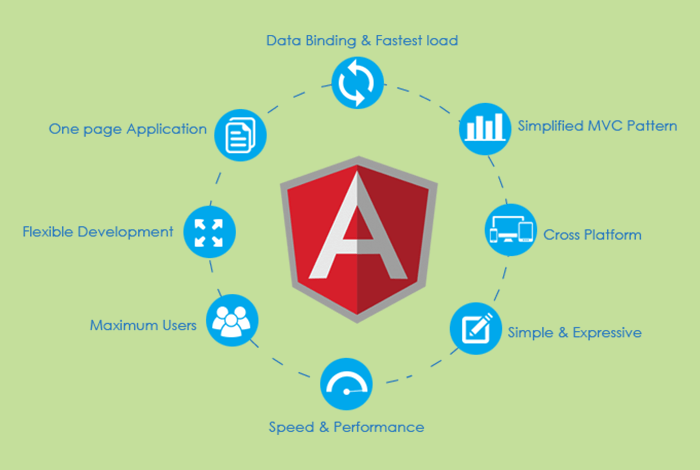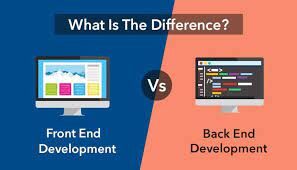In the dynamic realm of web development, keeping pace with the latest technologies is imperative. Angular, a potent and flexible front-end framework, has emerged as a powerhouse for constructing dynamic and feature-rich web applications. Developed and maintained by Google, Angular has gained substantial popularity due to its modularity, efficiency, and expansive ecosystem.
In this blog post, we will delve into the nuances of Angular, exploring its core features, architecture, and the benefits it brings to web development.

Understanding Angular:
Architecture and Components:
Angular adopts a component-based architecture, breaking down the application into reusable and manageable components. Each component encapsulates its own logic, styles, and HTML templates. This modular structure enhances maintainability and scalability.
Two-Way Data Binding:
Angular boasts a standout feature – two-way data binding. This implies that alterations in the user interface (UI) automatically reflect in the application logic and vice versa. This bidirectional communication simplifies the development process and reduces the need for excessive boilerplate code.
Dependency Injection:
Angular employs a robust dependency injection system that facilitates the organization and injection of dependencies in a clean and modular manner. This promotes code reusability and simplifies testing.
Directives:
Angular’s directives enable developers to extend HTML with custom attributes and tags. This allows for the creation of dynamic and interactive content, thereby enhancing the overall user experience.
Services:
Services in Angular are singleton objects shared across components. They play a crucial role in encapsulating business logic, making it easily accessible throughout the application. This encourages code separation and maintainability.
Routing:
Angular’s built-in router streamlines the navigation process in single-page applications. Developers can define routes, associate them with components, and seamlessly navigate between views without the need for full-page reloads.
TypeScript Integration:
Angular is constructed with TypeScript, a superset of JavaScript. TypeScript introduces static typing, interfaces, and other features that improve code quality and developer productivity.
Advantages of Angular:
Productivity Boost:
The modularity and reusable components in Angular contribute to increased developer productivity. Teams can collaborate more efficiently, and development cycles are often accelerated.
Maintainability:
Angular’s architecture and separation of concerns make it easier to maintain and update code. Changes to one component are less likely to affect others, reducing the risk of unintended consequences.
Cross-Platform Development:
Angular facilitates the development of cross-platform applications, allowing developers to use the same codebase for web, mobile, and desktop applications.
Community and Ecosystem:
With the support of Google and a vast community of developers, Angular boasts a rich ecosystem of libraries, tools, and extensions. This facilitates finding solutions to common problems and expedites development.
Conclusion:
In summary, Angular has positioned itself as a robust and versatile framework for building modern web applications. Its robust architecture, two-way data binding, and extensive feature set contribute to a seamless development experience. As technology continues to advance, Angular remains a key player in the field of front-end development, empowering developers to create sophisticated and responsive applications. Whether you are an experienced developer or a novice embarking on your web development journey, exploring Angular can open new horizons and elevate your capabilities.







